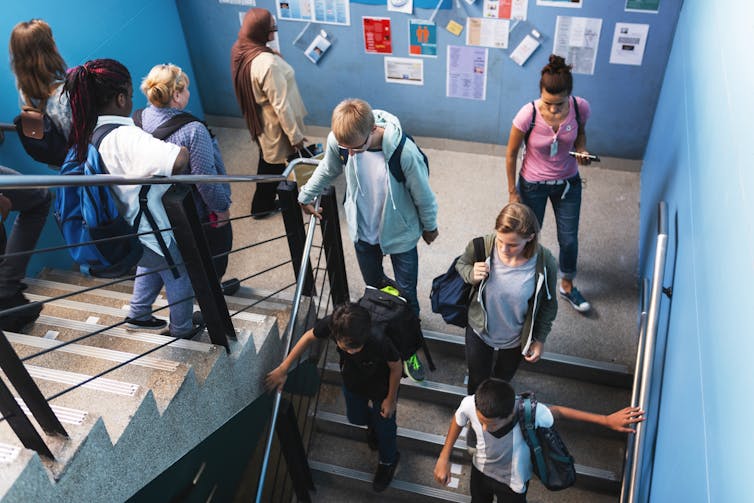Source: The Conversation – UK – By Michael Head, Senior Research Fellow in Global Health, University of Southampton
Cancer kills one in five people globally. Yet, except for a one-off increase in 2021, the flow of money for cancer research has trended downward every year since 2016.
Our new analysis of more than 100,000 public and philanthropic grants reveals where research funding is being allocated. There are very likely to be reductions in funding from the US under the Trump government. So it’s important to understand how other groups of countries, such as the Commonwealth, can address this shortfall.
The Commonwealth is a network of 56 nations. Membership includes high-income countries such as the UK, Canada and Australia, and lower-income members in Africa and the Caribbean. Together, its members account for over 14% of cases of common cancers globally in 2020 – a share projected to rise to 17% by 2050.
Survival rates vary dramatically, from under 5% five-year survival in some lower-income countries to 60% in wealthier countries. Understanding how research funding flows within this diverse group offers a roadmap for fairer investment and opportunities for international collaboration. This can also help address the likely funding gaps from the US.
As a part of the Lancet Oncology Commission for Cancer in the Commonwealth, we and partners across several institutions took the most comprehensive look to date at global cancer research investment (2016–23). We mapped over 107,955 awards worth US$51.4 billion (£38.1 billion), categorising each project by cancer type, type of research and funder. We then used global and Commonwealth-wide network maps to reveal which countries were central to awarded grants, publications, clinical trials and patents, and which countries remained peripheral.
Our analysis showed that laboratory studies received 76% of funding (US$39 billion), while clinical trials drew just 7.3% (US$3.7 billion).
Breast cancer accounted for 10.3% of the funds (US$5.3 billion), and blood cancers accounted for 9% (US$4.7 billion). Despite their central role in treatment, surgery research was the focus of only 1.7% (US$0.8 billion) and radiotherapy 3.1% (US$1.6 billion).
Lower-income countries received less than 0.1% of total grants, highlighting a stark mismatch between cancer burden and research capacity.
Funders’ heavy focus on laboratory science potentially starves the late-stage trials and implementation research that translate discoveries into patient care.
The small amount of investment in surgery and radiotherapy research risks slowing advances in methods that already save lives today. Equally, the near-absence of funding led by lower-income countries perpetuates a cycle where countries with the greatest projected rise in cancer cases have the least capacity to respond.
Within the Commonwealth, the UK, Australia and Canada dominate both in terms of providing and receiving grant funding. These three countries serve as hubs for collaboration – linking lower-income countries to the US and EU.
In contrast, collaboration among lower-income Commonwealth countries on developing new drugs and technology remains weak, suggesting untapped potential in turning lab discoveries into new treatments and products across a wider breadth of countries.
With an unpredictable president in the White House, it’s vital to understand how other groups of countries can address the likely gaps. To this end, we illustrated below the effect of a potential funding cut from the US, and then measured the effort required for each group of countries to compensate for a hypothetical 50% cut of the US funding.

CC BY-NC-SA
Cutting US funding will significantly weaken international collaboration ties, which makes sharing ideas and skills harder. Yet, as shown in the table below, each group has sufficient stock of domestic grants where turning only a small proportion into cross-border grants is enough to restore the collaboration level. That is, the EU to raise its share from 4.18% to 4.48%, non-US G7 countries from 1.11% to 1.20%, the rest of the world from 1.63% to 1.89%, the Commonwealth from 0.66% to 0.69%, and Brics (Brazil, Russia, India, China and South Africa) from 0.49% to 0.99%.
| Group | domestic | international | int_pct | int_pct_target | compensation |
|---|---|---|---|---|---|
| EU | 5224 | 228 | 4.18% | 4.48% | 16 |
| BRICS | 4198 | 20 | 0.49% | 0.99% | 21 |
| G7_no_US | 18720 | 210 | 1.11% | 1.20% | 17 |
| CW | 7028 | 47 | 0.66% | 0.96% | 21 |
| ROW | 8114 | 135 | 1.63% | 1.89% | 21 |
The numbers tell a straightforward story. When the US cuts cancer research funding, it breaks connections among researchers worldwide. This makes it harder for scientists to share discoveries and learn from each other – ultimately hurting cancer patients everywhere.
But other countries can step up to fill this gap. The table shows that each group of countries already funds plenty of domestic research. They just need to redirect a small portion of these existing grants to include international partners. This would restore the global research network to its previous strength.
This is an opportunity for governments to work together and take the lead on cancer research when the US steps back.
Four practical steps could make this happen.
- Match funding to where cancer hits hardest. Review current grants to ensure money goes to the deadliest cancers and the countries with the worst survival rates.
- Create research hubs in poorer countries. Build centres of excellence in lower-income Commonwealth countries that can train researchers, share data and run clinical trials.
- Fund surgery and radiotherapy research. These treatments save lives today, but get barely any research money. They deserve dedicated funding streams.
- Help researchers turn discoveries into treatments. Create programmes that help scientists in all Commonwealth countries – not just wealthy ones – patent their discoveries and develop them into actual medicines.
Looking ahead
Cancer kills nearly 10 million people each year, with over 20 million new cases diagnosed. By 2050, deaths are estimated to reach 18 million. The numbers are getting worse, not better.
The Commonwealth’s wealthy countries – the UK, Canada and Australia – could serve as bridges, connecting researchers across rich and poor nations. Done right, this could reshape how the world fights cancer, ensuring no country gets left behind simply because they lack resources.
![]()
Michael Head has previously received funding from the Bill & Melinda Gates Foundation, Research England and the UK Department for International Development, and currently receives funding from the UK Medical Research Foundation, and UK Research and Innovation
Markus Brede receives funding from UK Research and Innovation and has previously received funding from the Royal Society and the Alan Turing Institute.
Anbang Du does not work for, consult, own shares in or receive funding from any company or organisation that would benefit from this article, and has disclosed no relevant affiliations beyond their academic appointment.
– ref. How to save global cancer research from Trump’s cuts – https://theconversation.com/how-to-save-global-cancer-research-from-trumps-cuts-258642













